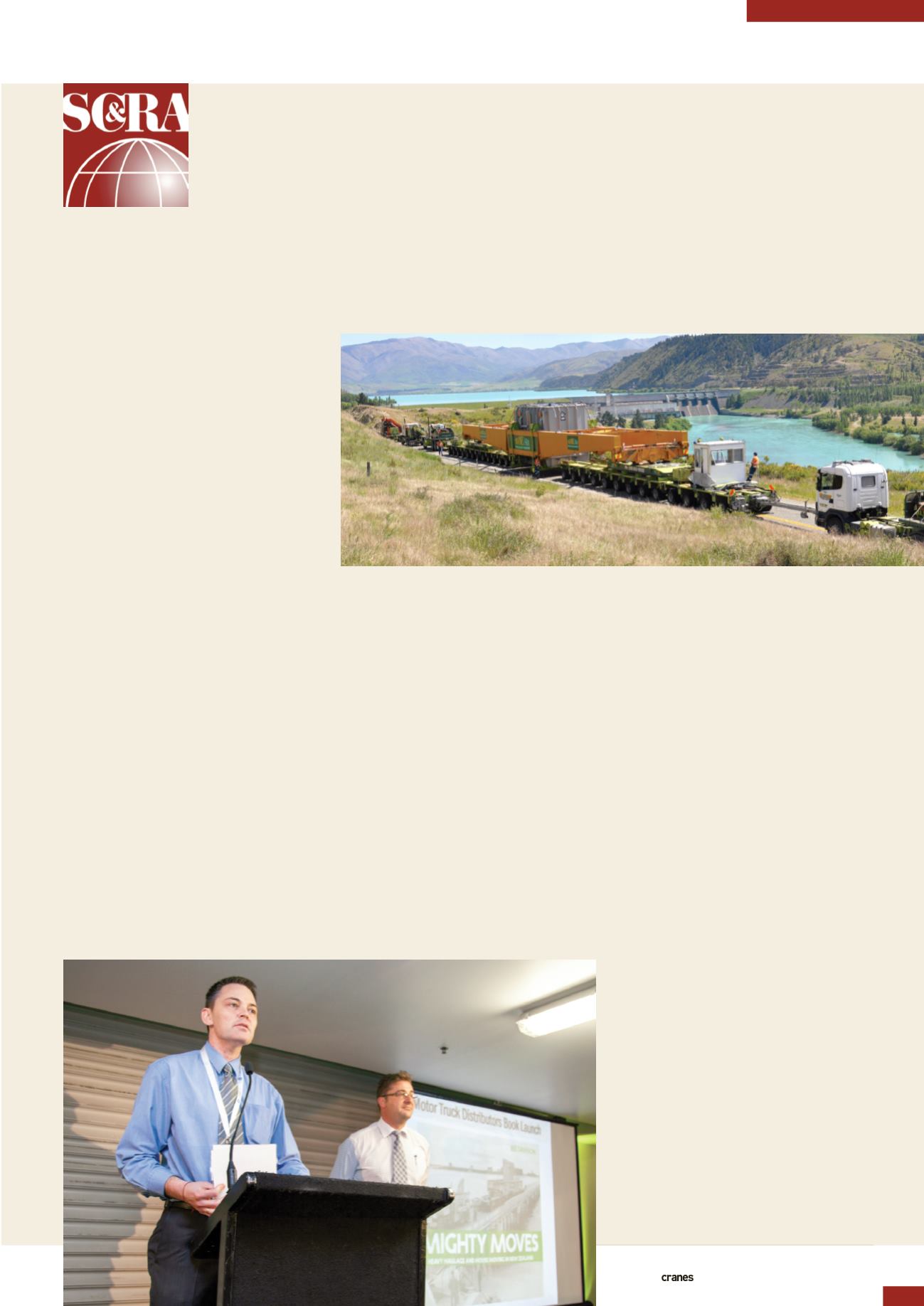
SC&RA NEWS
65
INTERNATIONAL AND SPECIALIZED TRANSPORT
■
OCTOBER 2013
T
he benefits of membership in an
international association often
come by way of networking,
information exchange and the collective
value of shared experiences. In the
industry of specialized transport and
crane and rigging it not only pays to know
your peers but it enhances your own
awareness of the common ground between
global players when the chance emerges to
listen to another member’s story.
We look at two industry leaders in
this issue, who also happen to be valued
SC&RA members. Representing the New
Zealand (NZ) Heavy Haulage Association,
Jonathan Bhana-Thomson provides some
background on the various roles and
responsibilities that come with the job of
chief executive of the country’s national
trade association for companies that
transport overweight or over-dimension
loads. From Brazil, João Dominici,
Sindipesa executive vice president,
describes an organisation deeply involved
in representing the interests of Brazil’s
many transportation and non-divisible
and overweight loads and crane and
rigging companies.
MIKE CHALMERS:
You’re both at the helm
of some established enterprises – which
also happen to be alive and progressing
within the intensity of this challenging
industry. What is your background with your
company, and what types of issues do you
find yourself addressing in this business on
a steady basis?
JONATHAN BHANA-THOMSON:
I’ve been
employed as the chief executive at the NZ
Heavy Haulage Association for the last 10
years, and I’ve been with the Association
for the past 14 years. In New Zealand the
heavy haulage industry is a smaller part
of the whole road transport industry;
however, we are seeing growth in the use
of the members’ services as the demand
by clients has grown for the shifting
of larger equipment, machines and
pre-fabricated items.
JOÃO DOMINICI:
As executive vice
president of Sindipesa, my role is to
advocate for the specialized transportation
and crane and rigging industr y by
representing our members and fighting
to ke ep s egment regulations less
burdensome. Yet, Sindipesa faces many
challenges, as Brazil still has a long way to
go to get this sector developed. Challenges
to overcome roads, poor infrastructure,
excessive transportation costs, outdated
procedures, legal problems and a lack of
skilled workers, both in the private and
public sector, require a comprehensive and
versatile approach.
BHANA-THOMSON:
In our country the
Heavy Haulage Association membership
comprises specialist road transport
operators that move loads on overweight
permits and over-dimension permits.
Comprising a subsection of our industry
(and membership) are those specialist
house movers that relocate buildings from
site to site, both recycling existing houses,
as well as new, transportable homes. We
are proud of the fact that around three-
quarters of the permitted loads shifted
in New Zealand are done by members
of our association. My focus as chief
executive is in two primary areas when
it comes to advocacy for the industry:
preserving routes and providing capability,
and having regulatory regimes that are
workable and useful.
CHALMERS:
As experts in the field of
moving specialized loads, describe some
Sharing experiences
An understanding of industry peers can become the
logical road to success. MIKE CHALMERS reports
>
Jonathan Bhana-Thomson, NZ Heavy
Haulage Association chief executive, left,
with Paul Britton, NZ heavy Haulage
Association chairman, at the launch of
their Association book in 2012
Tranzcarr Heavy Haulage Ltd moving a 236 tonne transformer in front of the Aviemore Dam in the
South Island of New Zealand


